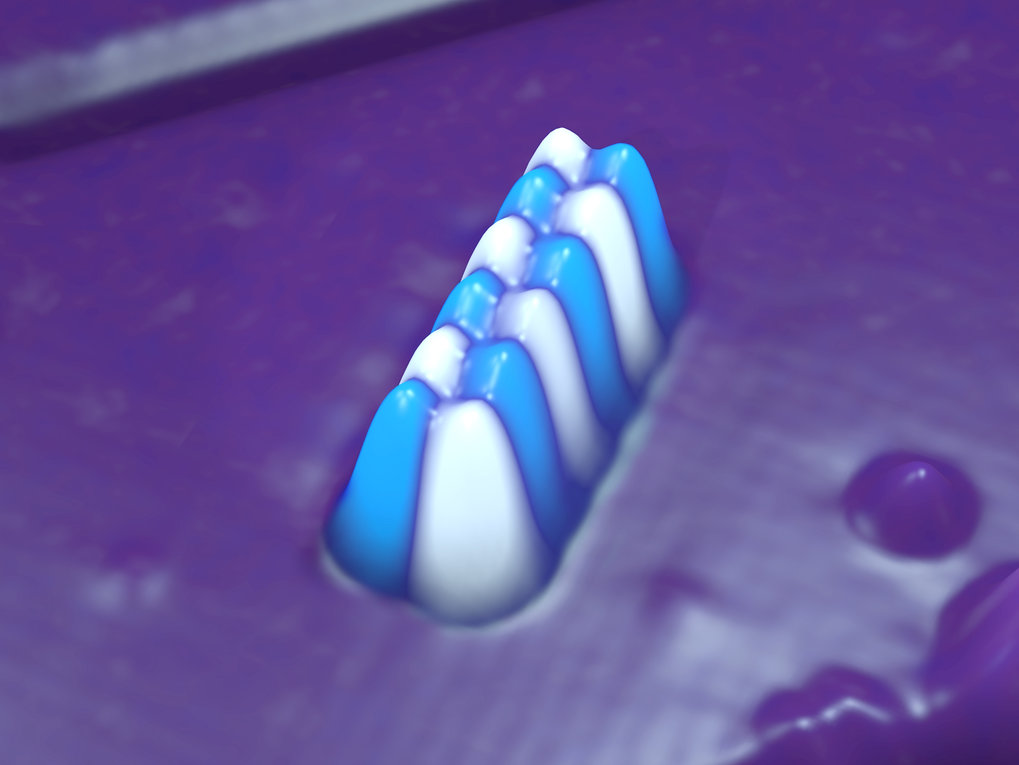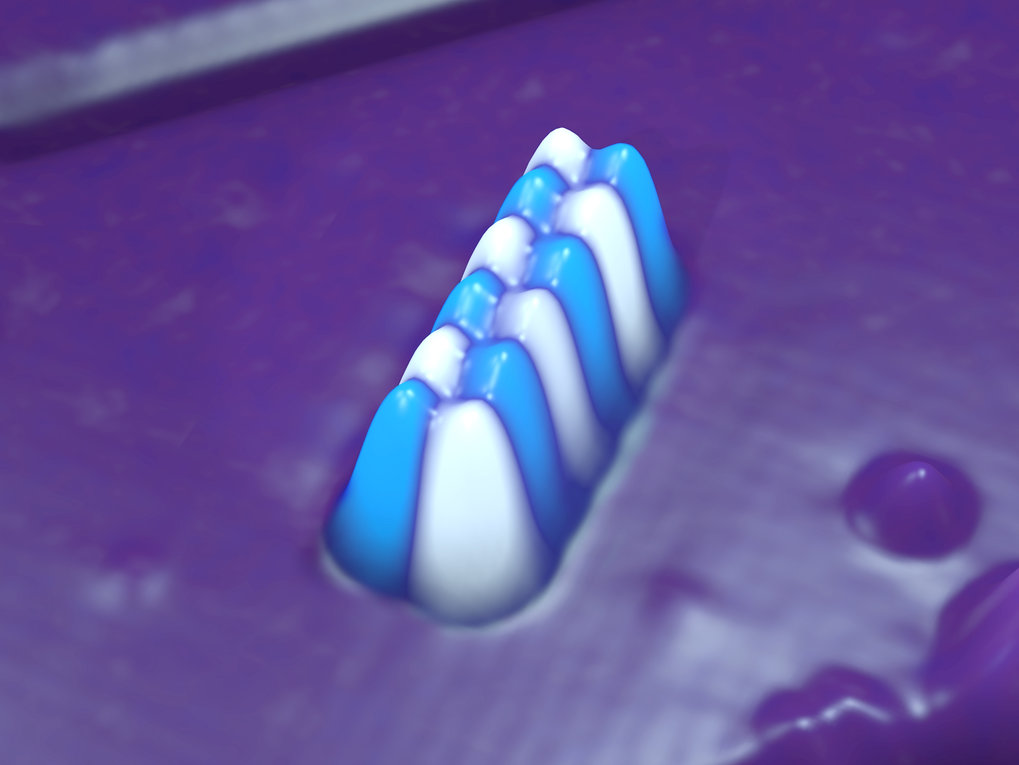The world's smallest magnetic data storage unit
Scientists from IBM and the German Center for Free-Electron Laser Science (CFEL) have built a magnetic data storage unit that uses just twelve atoms per bit.
Scientists from IBM and the German Center for Free-Electron Laser Science (CFEL) have built the world's smallest magnetic data storage unit. It uses just twelve atoms per bit, the basic unit of information, and squeezes a whole byte (8 bit) into as few as 96 atoms. A modern hard drive, for comparison, still needs more than half a billion atoms per byte. The team present their work in the weekly journal "Science" this Friday (13 January 2012). CFEL is a joint venture of the research centre Deutsches Elektronen-Synchrotron DESY in Hamburg, the Max-Planck-Society (MPG) and the University of Hamburg.

"With CFEL the partners have established an innovative institution on the DESY campus, delivering top-level research across a broad spectrum of disciplines," says DESY research director Edgar Weckert. The nanometre data storage unit was built atom by atom with the help of a scanning tunneling microscope (STM) at IBM's Almaden Research Center in San Jose, California. The researchers constructed regular patterns of iron atoms, aligning them in rows of six atoms each. Two rows are sufficient to store one bit. A byte correspondingly consists of eight pairs of atom rows. It uses only an area of 4 by 16 nanometres (ananometre being a millionth of a millimetre). "This corresponds to a storage density that is a hundred times higher compared to a modern hard drive," explains Sebastian Loth of CFEL, lead author of the "Science" paper.
Data are written into and read out from the nano storage unit with the help of an STM. The pairs of atom rows have two possible magnetic states, representing the two values '0' and '1' of a classical bit. An electric pulse from the STM tip flips the magnetic configuration from one to the other. A weaker pulse allows to read out the configuration, although the nano magnets are currently only stable at a frosty temperature of minus 268 degrees Centigrade (5 Kelvin). "Our work goes far beyond current data storage technology," says Loth. The researchers expect arrays of some 200 atoms to be stable at room temperature. Still it will take some time before atomic magnets can be used in data storage.
For the first time, the researchers have managed to employ a special form of magnetism for data storage purposes, called antiferromagnetism. Different from ferromagnetism, which is used in conventional hard drives, the spins of neighbouring atoms within antiferromagnetic material are oppositely aligned, rendering the material magnetically neutral on a bulk level. This means that antiferromagnetic atom rows can be spaced much more closely without magnetically interfering with each other. Thus, the scientist managed to pack bits only one nanometre apart.
"Looking at the shrinking of electronics components we wanted to know if this can be driven into the realm of single atoms," explains Loth. But instead of shrinking existing components the team chose the opposite approach: "Starting with the smallest thing - single atoms - we built data storage devices one atom at a time," says IBM research staff member Andreas Heinrich. The required precision is only mastered by few research groups worldwide.
"We tested how large we have to build our unit to reach the realm of classical physics," explains Loth, who moved from IBM to CFEL four months ago. Twelve atoms emerged as the minimum with the elements used. "Beneath this threshold quantum effects blur the stored information." If these quantum effects can somehow be employed for an even denser data storage is currently a topic of intense research.
With their experiments the team have not only built the smallest magnetic data storage unit ever, but have also created an ideal testbed for the transition from classical to quantum physics. "We have learned to control quantum effects through form and size of the iron atom rows," explains Loth, leader of the Max Planck research group 'dynamics of nanoelectric systems' at CFEL in Hamburg and the Max-Planck-Institute for Solid State Research at Stuttgart, Germany. "We can now use this ability to investigate how quantum mechanics kicks in. What seperates quantum magnets from classical magnets? How does a magnet behave at the frontier between both worlds? These are exciting questions that soon could be answered."
A new CFEL laboratory offering ideal conditions for this research will enable Loth to follow up these questions. "With Sebastian Loth, one of the world's leading scientists in the field of time-resolved scanning tunneling microscopy has joined CFEL," stresses CFEL research coordinator Ralf Köhn. "This perfectly complements our existing expertise for the investigation of the dynamics in atomic and molecular systems."
